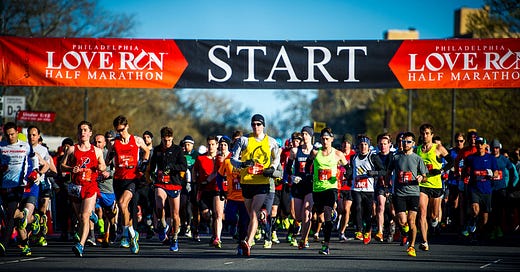The Love Run is a half marathon and 7k that's run in Philly, usually in the middle of the spring.
It's usually cold, as is the case for March in the Tri-State area. The course runs through the city before heading down (or is it out) Kelly Drive, winding through the outskirts of the city before finally finishing right in front of the Art Museum steps.
It…
Keep reading with a 7-day free trial
Subscribe to Talk Running To Me to keep reading this post and get 7 days of free access to the full post archives.



